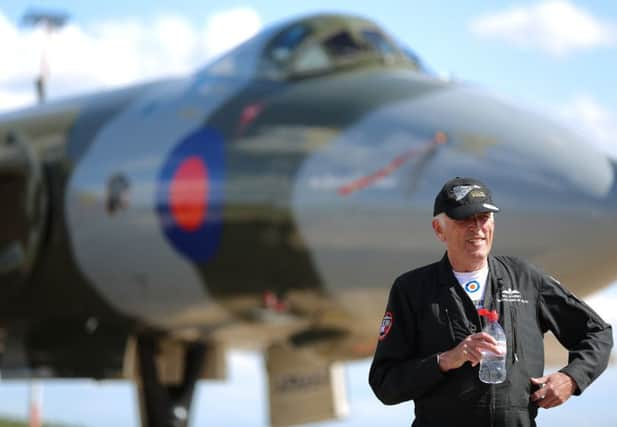Last of the Vulcans will say farewell to the skies this year


The aircraft itself was way ahead of its time and represented a quantum real leap in terms of wing design. Both Concorde and the B52 Stealth bomber took their cues from it.
It weighed up to 100 tons when fully loaded, could fly over 2,000 miles before refuelling, reach altitudes of over 50,000ft and, despite its size, was able to outmanoeuvre most fighter jets.
Advertisement
Hide AdAdvertisement
Hide AdThe only time it saw combat was during the Falklands War. The RAF retired the aircraft in 1984 but in 1997, efforts were made by a group of enthusiasts to bring one of the Vulcans back into use.
The Vulcan to the Skies Trust raised £7m and took more than a decade to make that dream come true, taking on an Avro Vulcan XH558 and making it airworthy so it could be flown in air displays around the country. Dr Robert Pleming, chief executive of the charity, which is based at Robin Hood Airport near Doncaster, explained why this would be the last year their Vulcan takes to the skies.
“It’s the last flying year for our Vulcan. It’s the end of an era for British aviation. It’s the last four-engine aircraft of its kind. It was the most complicated and expensive aircraft restoration project we have found anywhere in the world. By 2007 we raised £7m but since then we’ve spent about £2m a year and £22m in total keeping it going and most of that has come from donations from members of the public.
“We have to stop flying the aircraft after this year because we will no longer have technical support from engineers at the specialist companies which support us.
Advertisement
Hide AdAdvertisement
Hide Ad“This support was a requirement of our Civil Aviation Authority membership, which allowed us to fly. If you don’t see her this season, there will be no more opportunities to hear a Vulcan’s spine-tingling howl as she climbs high into the sky for another memorable display, or to see her rolling onto her side to reveal her giant delta silhouette.
“ I’m deeply saddened by it, the Vulcan is loved by a great many people. This is a real Concorde moment, it’s generating similar emotions.
“The Vulcan has real heritage value, she is a testament to British engineering. She is from an era when we ruled the skies, she was the most advanced aircraft in the world.”
He added, however, that it was not the end of the road for the Vulcan itself or the special tour days the charity operates from its South Yorkshire base.
Advertisement
Hide AdAdvertisement
Hide Ad“She will be kept as a live aircraft. We will still be able to taxi and start up the jets and take her to full power down the runway, we just won’t be able to take off.”
The Vulcan will fly out today and tomorrow from Robin Hood Airport and pass over the 17 sites in the country where other Vulcan bombers are based. It will take part in other air shows later this year and its final flight will be in October.
“We will be flying selected items in the aircraft so as many of her supporters as possible can purchase something that has taken part in this adventure,” said Dr Pleming.”
The Vulcan will fly from Robin Hood Airport on June 27 and 28 and will pass over the remaining 17 sites in the country where other Vulcans are based.
See www.vulcantothesky.org for details of its air show appearances.